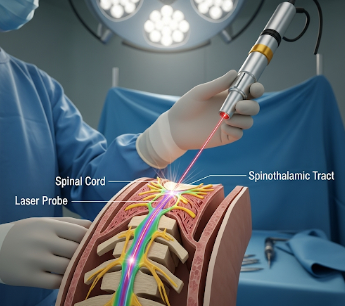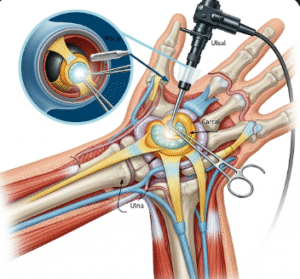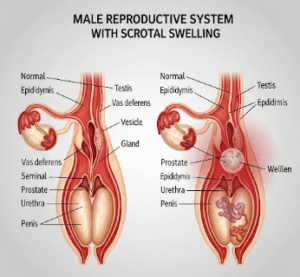Overview
Laser Cordotomy is a minimally invasive surgical procedure designed to relieve severe, intractable pain in patients with advanced cancer or other terminal conditions affecting the spinal cord or specific nerves. Using precise laser technology, surgeons can selectively interrupt pain pathways, providing significant pain relief while preserving essential motor function.
In Korea, patients have access to highly specialized neurosurgeons and pain management teams with expertise in laser spinal procedures, ensuring accurate treatment and minimal complications.
Highlights:
- ✅ Minimally invasive, precise pain control
- ✅ Effective for advanced cancer or severe chronic pain
- ✅ Short recovery time and targeted intervention
What is Laser Cordotomy?
Laser Cordotomy involves using a laser to selectively destroy pain-transmitting nerve fibers in the spinal cord. It is primarily performed on patients with uncontrolled pain that does not respond to conventional medications, such as opioids.
Indications include:
- Advanced cancer pain (lung, head and neck, or spinal tumors)
- Severe neuropathic pain resistant to medication
- Palliative care situations where pain management is critical
Important: The procedure is usually performed under imaging guidance to ensure precise targeting and reduce risk to surrounding motor or sensory pathways.
What are the benefits?
- Rapid pain relief: Significant reduction in severe, chronic pain
- Targeted therapy: Preserves motor and other sensory functions
- Minimally invasive: Small incisions or needle entry points
- Short recovery: Patients often resume daily activities quickly
Key benefits highlighted:
- ⚡ Can reduce or eliminate dependence on high-dose opioids
- ⚡ Improves quality of life for patients with advanced disease
- ⚡ Quick procedure with outpatient or short hospital stay
Procedure Details
1) How should I prepare for Laser Cordotomy?
- Preoperative evaluation: Blood tests, imaging (MRI or CT), and neurological assessment
- Medication review: Adjust anticoagulants or pain medications as instructed
- Consent and counseling: Discuss risks, benefits, and expected outcomes with the specialist
- Fasting instructions: Typically nothing by mouth for several hours prior to the procedure
- Arrange support: Family or caregiver assistance post-procedure if needed
2) What happens during Laser Cordotomy?
- Anesthesia: Local anesthesia with sedation, or general anesthesia depending on patient condition
- Imaging guidance: CT or fluoroscopy is used to precisely locate the target area
- Laser application: A thin probe delivers laser energy to interrupt pain pathways
- Monitoring: Continuous neurological monitoring ensures critical motor or sensory pathways are preserved
Duration: Usually 30–90 minutes depending on the number of targets and complexity
3) What happens after Laser Cordotomy?
- Recovery room monitoring: Vital signs and neurological function closely observed
- Pain assessment: Immediate reduction in pain is often noted
- Activity: Patients can often sit up and move the same day, depending on overall condition
- Follow-up care: Imaging and neurological checks to confirm effectiveness and monitor for complications
Highlights for post-procedure care:
- ⚡ Monitor for numbness or weakness in limbs
- ⚡ Report any unexpected pain or neurological changes immediately
- ⚡ Gradual resumption of normal activities as advised
- ⚡ Follow-up visits for ongoing pain management
Risks / Benefits
Risks:
- Temporary numbness or weakness
- Bleeding or infection at the entry site
- Rare risk of paralysis if surrounding motor pathways are damaged
- Laser-specific thermal injury (rare)
Benefits:
- Rapid, targeted pain relief
- Reduced reliance on systemic pain medications
- Minimally invasive approach with short recovery
- Improved comfort and quality of life in palliative care
Recovery and Outlook
- Hospital stay: Usually outpatient or 1–2 days depending on patient condition
- Full effect: Pain relief may be immediate or develop over a few days
- Long-term outlook: Effective for controlling pain in patients with terminal or chronic conditions
- Follow-up: Regular monitoring for neurological function and pain control
Tips for optimal recovery:
- ✅ Report any new neurological symptoms immediately
- ✅ Follow prescribed pain management plan
- ✅ Maintain hydration and nutrition to support overall recovery
- ✅ Attend all follow-up appointments for safety and effectiveness
When To Call the Doctor
- New or worsening numbness, weakness, or paralysis
- Uncontrolled pain after the procedure
- Signs of infection at the entry site (redness, swelling, fever)
- Any sudden changes in neurological function
Best Korea Option / Process
Korea offers advanced Laser Cordotomy care:
- Top hospitals: Experienced neurosurgeons and pain management specialists
- Advanced diagnostics: MRI, CT, and fluoroscopy for precise targeting
- Minimally invasive surgical options: Outpatient or short-stay procedures
- Postoperative care: Pain monitoring, neurological checks, and rehabilitation guidance
- International patient support: Online consultation, scheduling, and telemedicine follow-up
Step-by-step process in Korea:
- Online consultation and review of patient history and imaging
- Preoperative evaluation and planning
- Laser Cordotomy performed under imaging guidance
- Post-procedure monitoring and early mobilization
- Ongoing follow-up for pain control and neurological safety













